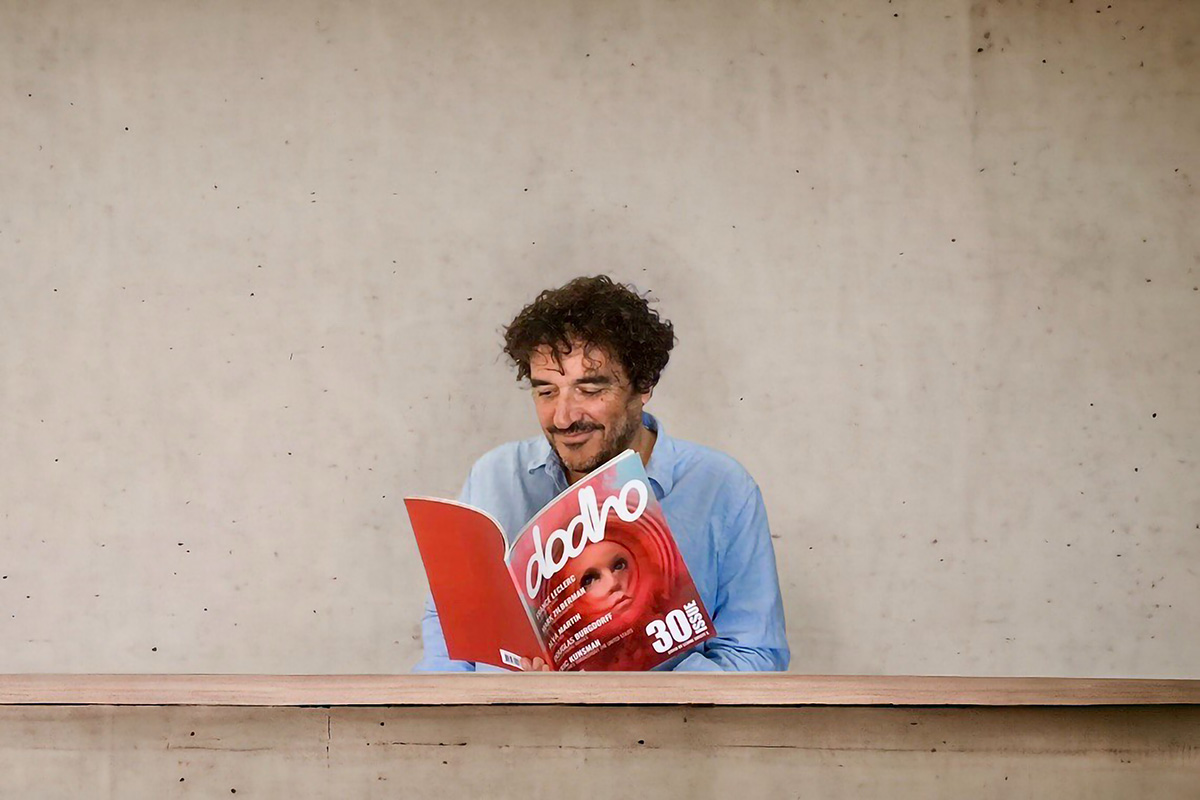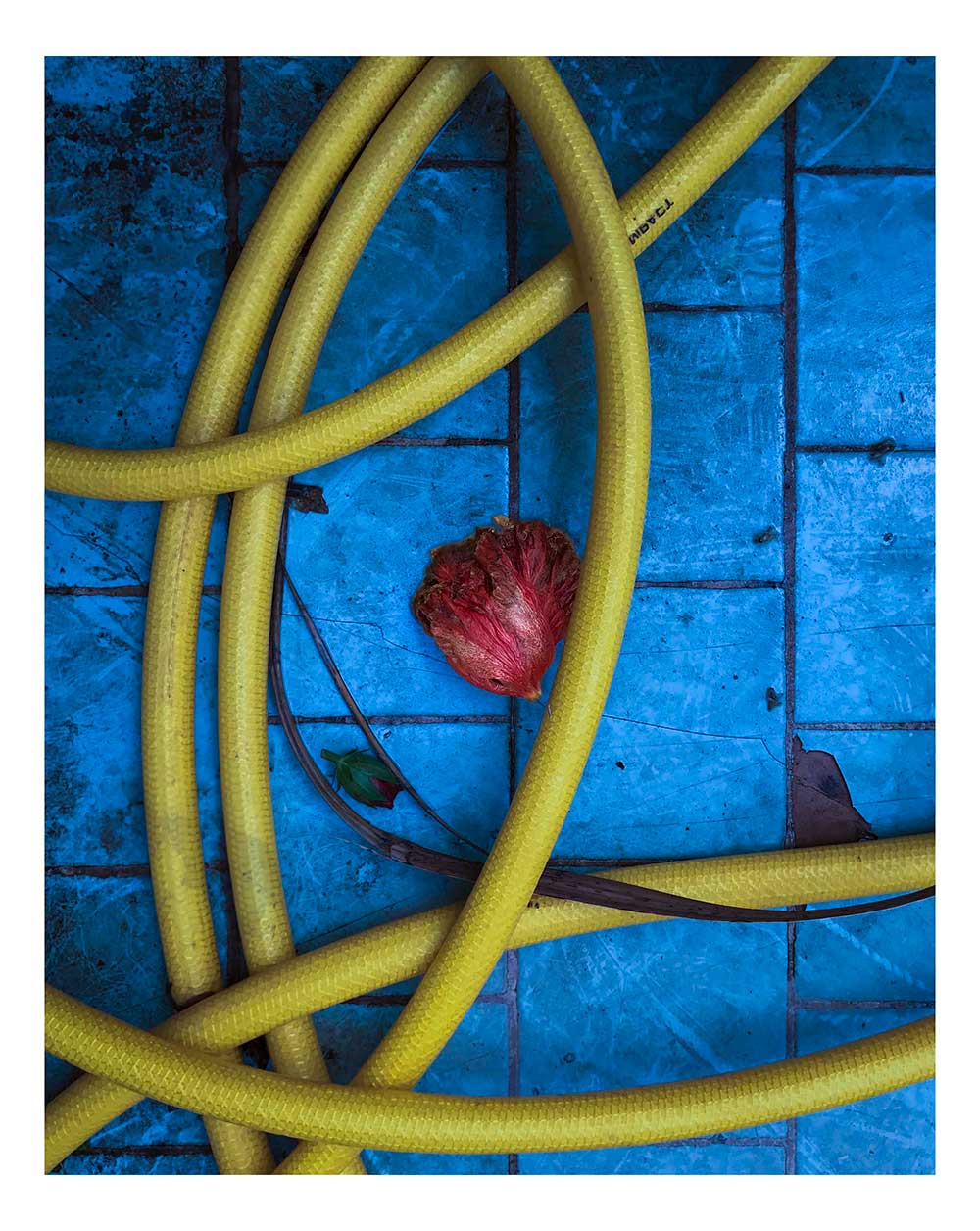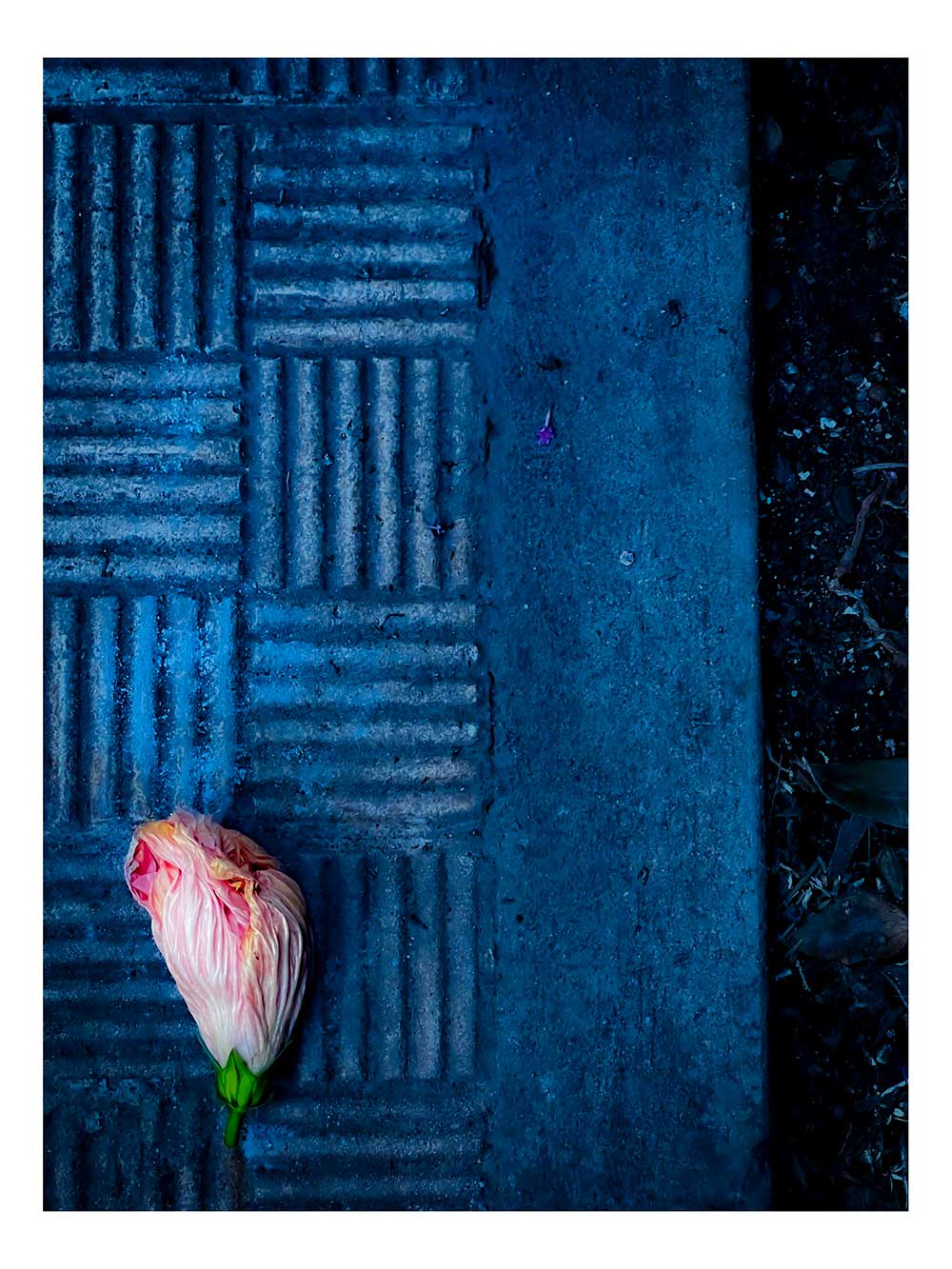Born in Tenerife, Canary Islands, Alva Martín holds a Master’s Degree in Physics and has built a successful international career in the field of Information Technology, forging a deep connection with technology along the way.
With a natural affinity for the digital world, he now channels this expertise into art, exploring the intricate intersection between technology and creativity.
His photographic approach often involves using mobile phones to capture striking visual narratives that delve into the complexities of human experience in today’s hyperconnected world. Alva’s artistic journey has gained significant recognition, including being selected for the prestigious ENAIRE Photography Awards 2024 and the Official Selection of the IPA Awards. These accolades highlight his dedication to pushing the boundaries of contemporary photography, blending the technical precision of his IT background with the emotional depth of his artistic vision.
In addition to his personal exploration of digital art and technology, Alva’s work frequently focuses on the human condition, exploring themes of melancholy, solitude, and finding beauty in unexpected places. Through his lens, he captures a world where digital presence is not just a backdrop but a central element of modern life, inviting viewers to engage in reflective experiences.
We invite you to read the full interview with Alva Martín, where he shares insights into his creative process, inspirations, and his perspective on the future of photography in the digital age. Discover how this innovative artist continues to challenge the boundaries of contemporary art and technology.
Your initial background is in Physics, and you’ve developed a career in information technology. How did your interest in photography and art in general come about?
Art has been woven into my life since childhood. My father, while primarily a Chemistry PhD, was deeply passionate about art and later pursued a Master’s degree in Art Studies. Some of my earliest memories are of the distinct scents of paint and acetone wafting from his studio, watching him create his paintings. His talent for painting, influenced by my great-uncle who was a renowned watercolorist, undoubtedly shaped my own artistic sensibilities.
How does your background in physics and technology influence your artistic vision and the way you approach your photographic projects?
The same driving force that led me to Physics guides my artistic vision: an insatiable curiosity about reality and its fundamental nature. In both disciplines, I find myself exploring essential questions: What is reality? How do we participate in shaping the world around us? This scientific background has instilled in me a methodical yet inquisitive approach to photography. I observe patterns, light behaviour, and compositional elements with both an analytical mind and an artistic eye. My natural curiosity pushes me to experiment and seek new perspectives in my photographic projects.
In your series “Flora Vida,” published in Dodho Magazine, you explore the beauty in the final stages of flowers. What led you to focus on decay and transformation rather than on full bloom?
“Flora Vida” emerged from a pivotal period of personal transformation. While renovating both my home and myself during a challenging time, I found unexpected beauty in my garden’s withering flowers. These fading blooms became a profound metaphor for life’s cycles of renewal. What struck me was how they maintained their elegance even in decline, challenging our usual preference for flowers in full bloom. The series captures this paradox: that there is profound beauty in transformation, even when it appears as decay. The withering petals mirrored my own journey of breaking down to rebuild, revealing that life’s beauty isn’t limited to its peak moments but extends through all its phases, including those of apparent decline and renewal.
“Flora Vida” uses flowers as metaphors for the human condition. Could you delve into how this analogy is reflected in your images and the messages you seek to convey?
In “Flora Vida,” each photograph captures a moment where beauty and vulnerability intersect. The wilting petals, with their complex textures and shifting forms, serve as metaphors for human resilience. Just as flowers continue to emanate grace even as they fade, humans often reveal their greatest strength during periods of vulnerability. The interplay of light and shadow in the series emphasizes this duality—the shadows representing our challenges, while the light illuminates the enduring beauty found in transformation. Rather than portraying decay as an endpoint, these images celebrate it as a necessary phase in the continuous cycle of renewal.
Melancholy and solitude are recurring themes in your work. What personal experiences or perspectives inspire you to explore these feelings in your photography?
My exploration of melancholy and solitude stems from early experiences of feeling like an outsider. As a child and young adult, I often found myself existing somewhat apart from others, creating elaborate inner worlds as a refuge. There’s a particular kind of nostalgia that comes from yearning for experiences that never were—a melancholy not for what was lost, but for what might have been. My photography explores this liminal space between reality and imagination, capturing moments that echo with the quiet solitude I knew so well growing up. These themes in my work aren’t about sadness per se, but rather about the bittersweet beauty of introspection and the rich inner life that can develop when one stands slightly apart from the mainstream.
You frequently use the mobile phone as your main tool to capture images. What advantages does this medium offer you, and how does it influence your creative process and the final result of your works?
The mobile phone has revolutionized my approach to photography by eliminating the barrier between seeing and capturing. It’s not just about convenience—it’s about immediacy and intimacy. When I encounter a compelling composition or a perfect play of light, I can respond instantly to these fleeting moments. The phone becomes an extension of my vision, always ready to capture those ephemeral instances where reality reveals its hidden poetry.
Working with a phone camera has taught me to be more instinctive and observant. It’s shaped my photographic style into one that celebrates the spontaneous and the intimate—those unrepeatable moments where light, shadow, and composition align perfectly. The medium influences the final result by maintaining a sense of authenticity and rawness that might be lost with more formal equipment. It’s as if the phone’s everyday nature helps bridge the gap between my observed reality and those dreamlike qualities I seek to capture in my work.
Your focus on finding beauty in unexpected places and moments challenges conventional notions of aesthetics. How do you define beauty in your work, and what do you hope the viewer perceives in this regard?
I believe beauty is omnipresent but often overlooked in our daily rush. My work seeks to unveil the extraordinary in the ordinary, revealing the aesthetic value in moments and objects we typically pass by without notice. Beauty manifests in unexpected geometries, in the interplay of light and shadow, in the quiet dignity of overlooked spaces and objects.
What I aim to achieve through my photography is a kind of visual meditation—an invitation for viewers to pause and reconnect with their innate ability to perceive beauty in all its forms. Whether it’s in the subtle patterns of decay, the harmony of mundane compositions, or the fleeting play of light, there’s a profound beauty waiting to be discovered. As Walt Whitman so perfectly expressed in “Song of the Open Road”: “All seems beautiful to me.” This isn’t just poetic sentiment—it’s a fundamental truth about the nature of beauty itself.
You grew up surrounded by nature in Tenerife. How has this environment influenced your artistic sensibility and the themes you choose to explore in your projects?
Growing up in Tenerife profoundly shaped my artistic vision. Living on an island creates a unique relationship with nature—the omnipresent ocean serves as a constant horizon, a reminder of both boundaries and infinite possibilities. This insular environment fostered in me a deep appreciation for the subtle rhythms of nature, from the play of light on water to the dramatic interplay between land and sea.
The meditative quality in my work directly reflects these formative experiences. That sense of tranquility one feels when gazing at the ocean or being enveloped by nature—I strive to capture and translate this same contemplative intimacy in my photography. My island upbringing taught me to appreciate both grandeur and minutiae: how a vast seascape can evoke the same sense of wonder as a single leaf catching the light.
In “Flora Vida,” you mention that you seek to capture impermanence and the ephemeral moments of life. Why do you consider it important to highlight these aspects, and how do you hope they affect the viewer?
“Flora Vida” explores impermanence not as an endpoint, but as a vital part of life’s continuous renewal. As Leonard Cohen eloquently wrote, “There is a crack in everything, that’s how the light gets in.” This series aims to reveal the profound beauty and hope that exist within moments of transition and apparent decline.
By documenting these ephemeral stages, I invite viewers to reconsider their relationship with imperfection and change. Each image serves as a meditation on the temporary nature of all things, yet simultaneously celebrates the beauty inherent in transformation. My hope is that viewers find comfort and resonance in these photographs, recognizing that vulnerability and decay are not merely endings, but essential parts of life’s ongoing cycle of renewal and rebirth. There is indeed beauty in the darkness, and most importantly, there is always hope in transformation.
The combination of technology and art is a central element in your work. How do you balance technical precision with emotional expression in your photographs?
In my work, technology isn’t merely a tool but a bridge between precision and emotional expression. While my background in physics gives me an appreciation for technical accuracy, I see technology primarily as an enabler of artistic vision. My mobile phone, for instance, allows me to capture those fleeting moments of beauty with spontaneity and immediacy.
In projects like “sentinel“, I explore how technology shapes our modern experience, examining themes of surveillance and hyperconnectivity through an artistic lens. Rather than seeing technology and emotional expression as opposing forces, I view them as complementary elements. The technical precision helps me capture exactly what I envision, while my artistic sensibility guides what I choose to capture and how I frame it. This balance allows me to create work that is both technically proficient and emotionally resonant.
This synthesis reflects our contemporary reality—we live in a world where technology and human experience are increasingly intertwined. My aim is to harness technical tools in service of emotional truth, creating images that speak to both the mind and the heart.
Could you share what your creative process is like from the conception of an idea to the realization of a photographic series like “Flora Vida”?
My creative process often begins with intuition rather than premeditation. While some photographers plan their series meticulously, I find that my most meaningful work emerges from a more organic journey of discovery. “Flora Vida,” for instance, didn’t start as a conceived project—it evolved naturally from my daily encounters during a period of personal transformation.
I believe in what I call “emotional photography”—where your inner state guides your eye and shapes what you see. With “Flora Vida,” I found myself repeatedly drawn to withering flowers, unconsciously creating a visual diary of my emotional landscape. Only after accumulating these images did I recognize the recurring patterns and deeper themes emerging from them.
This retrospective realization is vital to my process. Rather than imposing meaning from the outset, I allow the photographs to reveal their collective narrative over time. The series comes together like pieces of a puzzle, each image contributing to a larger story that often becomes clear only after the dust has settled. This approach allows for a more authentic and emotionally truthful body of work.
What currently inspires you, and what themes or concepts would you like to explore in future artistic projects?
Building on my exploration of technology’s role in our lives through “sentinel,” I’m increasingly drawn to examining the complex relationship between humanity and digital connectivity. I’m particularly interested in finding ways to artistically capture how technology simultaneously connects and isolates us, creating both intimacy and distance in our daily experiences.
My future projects will likely continue to merge my scientific background with artistic expression, but with a stronger focus on how our digital existence affects our perception of reality and human connection. I’m inspired by the paradoxes of our modern world—how we can feel both more connected and more alone than ever before. I want to explore these themes while maintaining my commitment to finding beauty in unexpected places, perhaps revealing the poetry in our technological interactions just as I found beauty in declining flowers.
These new directions feel like a natural evolution of my work, combining my interest in technological precision with the emotional depth and contemplative nature that characterizes my previous projects.











